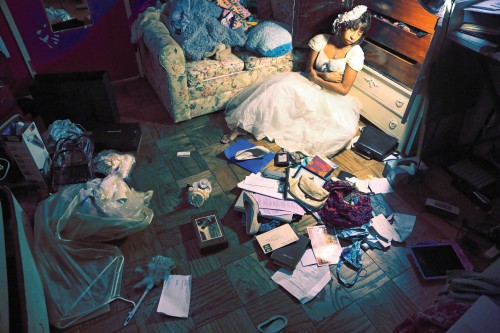Most of us are familiar with headline-making AIDS activists and celebrity spokespeople, but the epidemic’s history includes a trove of intimate stories that unfolded in a more private setting: the home. Many of these hidden tales—such as learning to care for loved ones with AIDS-related illness or fighting for the basic right to have a home—have gotten their much-deserved spotlight with AIDS at Home: Art and Everyday Activism, an exhibit at the Museum of the City of New York running through October 22.
Spanning photography, painting, collage, film, embroidery and sculpture, the art is as rich and diverse as its subject matter. The show organizes its content into three themes: caretaking, including groups like the Buddy Program at Gay Men’s Health Crisis (GMHC) and the meal delivery program God’s Love We Deliver; housing and homelessness, including advocacy group Housing Works, an offshoot of ACT UP; and family, including a look at how the definition of family and kinship expanded as the LGBT community took care of its own and fought for marriage equality. The exhibit ends with a coda that explores HIV/AIDS today, including a video about Ted Kerr of the caretaking collective What Would an HIV Doula Do?
As the show’s curator, Stephen Vider, says: “Looking at HIV/AIDS through the lens of home reveals a largely untold story and changes our understanding of the epidemic, both who is impacted and what counts as activism.”

Kai LaBeija’s “The First Ten Years”Courtesy of Kai LaBeija

L. J. Roberts’s “Chaplain Christopher Jones at Home in Harlem”

Hugh Steers’s “Bath Curtain”Courtesy of Alexander Gray Associates/Estate of Hugh Steers

Joyce McDonald’s “Trusting”Courtesy of Joyce McDonald

Moderator Matthew Rodrigues and authors Tim Murphy (“Christodora”), Anne-christine d’Adesky (“The Pox Lover”) and David France (“How to Survive a Plague”)Jennifer Morton







Comments
Comments